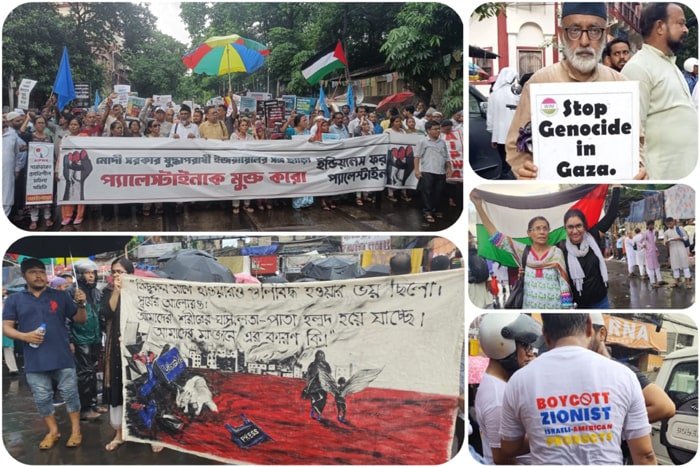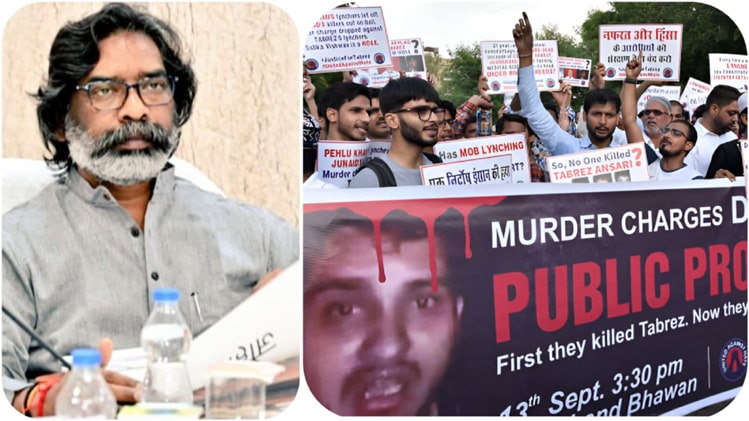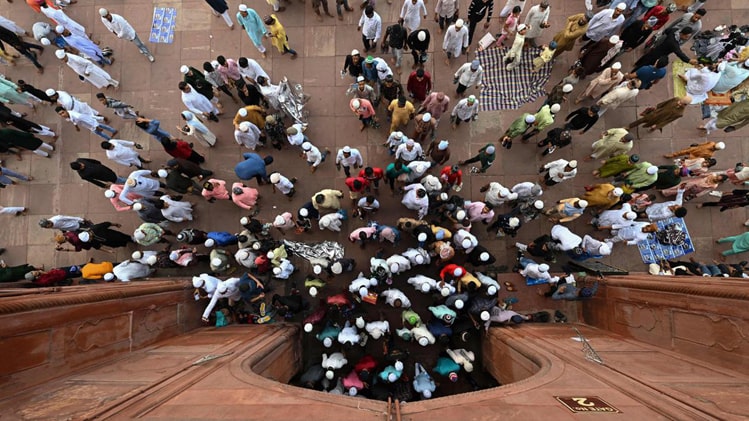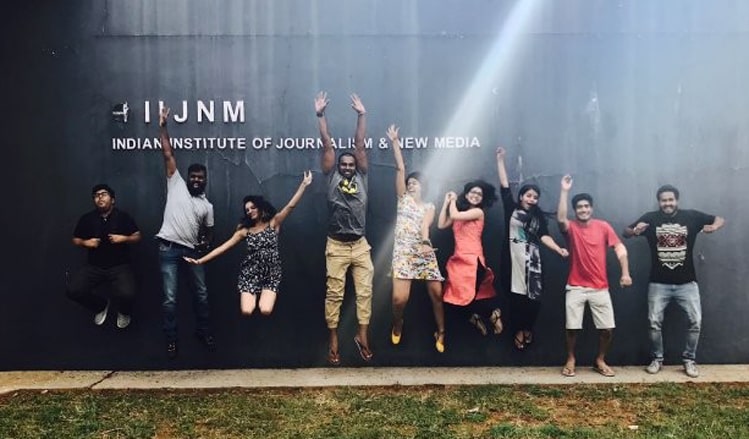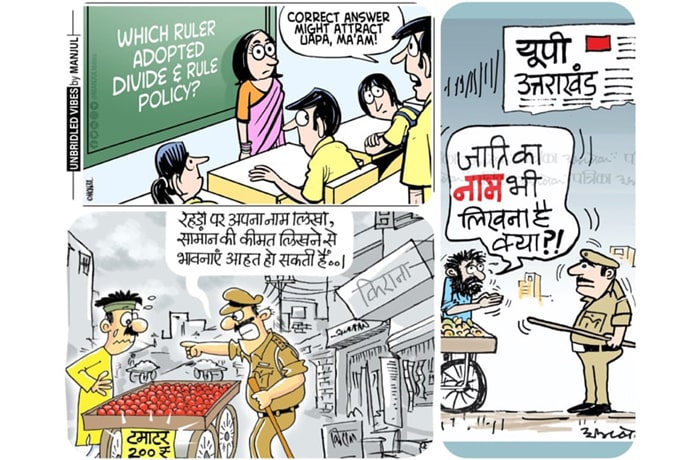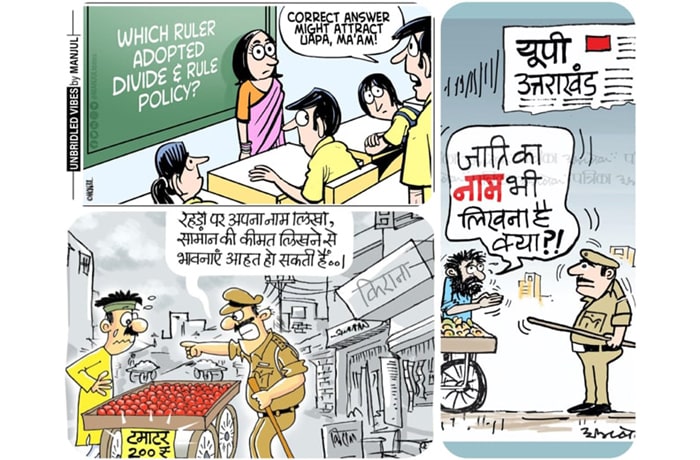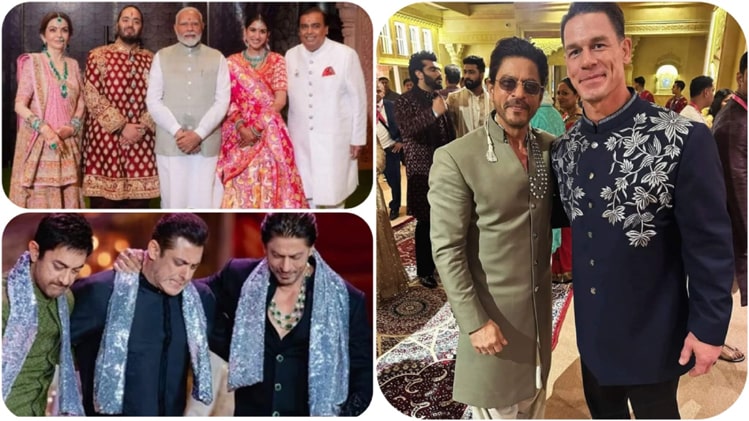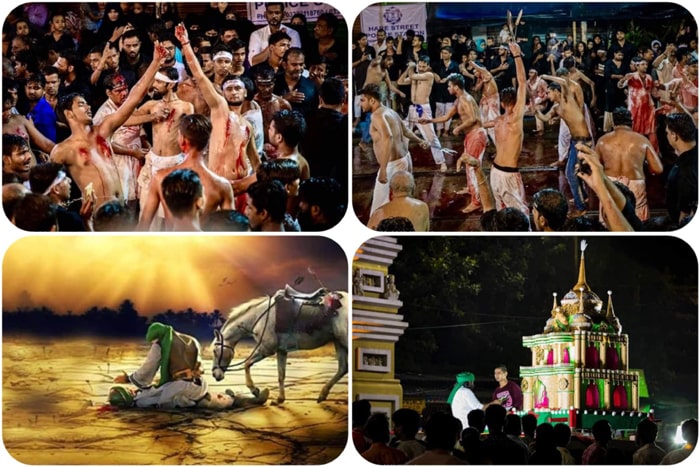[dropcap]न[/dropcap]सीरुद्दीन शाह केवल अदाकारी के कारण ही नसीर साहब नहीं बने बल्कि अपने एटिट्यूड के कारण भी यहां तक पहुंचे हैं. जो बच्चा बचपन से खुद को बाकियों से कमतर पाता हो, जिसके पिता ने तय कर लिया था कि तुम कुछ और बनोगे, अब नियति कहिए, विद्रोह या एटिट्यूड नसीर ने रंगमंच अपनी अलग राह चुन लिया। कहते हैं प्रतिभा अपना हर्जाना वसूल लेती है, लिहाज़ा नसीर को अपने पिता से वो नज़दीकी नसीब नहीं हुई जो अन्य बच्चों को होती है। नसीरुद्दीन शाह ने नैशनल स्कूल ऑफ़ ड्रामा में इब्राहिम अल्काजी के स्वर्णिम दौर में ऐक्टिंग का कोर्स किया था। तब पुणे फिल्म संस्थान भी खुल चुका था, इक्का दुक्का किसी कलाकारों को छोड़ दें तो उसने देश को अदाकार नहीं दिए, लेकिन यह बात सर्वविदित है कि अल्काजी साहब के जमाने के अदाकार-शागिर्दों की बात ही अलग है. रंगमंच की दुनिया में अल्काजी साहब ही वो उस्ताद हैं जिन्होंने नसीर शाह को निखारा।
कहते हैं कि राष्ट्रीय नाट्य विद्यालय (National School of Drama) में जो एक बार चला जाता है वो बोलने, लिखने, ख़ासकर व्यक्त करने की चरम सीमा पर पहुंच जाता है, गौरतलब है कि अभिनय का सबसे प्रमुख टूल भावों की अभिव्यक्ति ही है। NSD में ओमपुरी के साथ नसीर की दोस्ती केवल दो लोगों की दोस्ती नहीं बल्कि समानांतर सिनेमा की नींव पड़ रही थी.. ओम पुरी अपनी अंतिम साँस तक खुद को माता – पिता से पैदा किए जाने के बाद हम उम्र दोस्त नसीर को अपना पालक दोस्त कहते रहे हैं, कोई ओम पुरी के जाने की पीड़ा नसीर की आँखों में देख सके तो देख ले साफ़ दिखाई देती है।
अनोखा कलाकार
अभिनय, नाटक, थिएटर को लेकर नसीर के सिद्धांत उन्हें बांकी अभिनेताओं से अलग बनाते हैं। आज भी थिएटर को दिल में रखते हैं, हिन्दुस्तानी सिनेमा के इकलौते ऐक्टर हैं जो सुपरस्टार बनने के बाद भी नाटक जीना नहीं छोड़ते। अब भी नसीर के अंदर नाटक, थियेटर के लिए वो जुनून देखते ही बनता है। जब हिन्दी सिनेमा में उनके हाथों में एक से बढ़कर एक स्क्रिप्ट थी, तब एक फिल्म में एक मिनट के रोल के लिए सब कुछ छोड़कर पेरिस चले गए, चूंकि उन्हें लगता था कि मैं अभिनय के जिन सिद्धांतों को मानता हूं, वो उस फिल्म में हैं, चाहे रोल एक मिनट का ही क्यों न हो! छोड़ने पाने का समर्पण नसीर को अनोखा बनाता है।
एक दौर में दिलीप साहब ने कभी कहा था तुमसे अदाकारी होगी? कभी देखकर शबाना आज़मी ने कहा था – “तुम दिखने में दुनिया के सबसे विचित्र आदमी तुम्हारी हिम्मत कैसे हुई? कि तुमने हीरो बनने का सोचा… समय का चक्र देखिए नसीर ने शबाना आज़मी के पति, प्रेमी के रोल में इतिहास लिख डाला.. आज जब भी शबाना आज़मी के सिनेमा की सार्थकता सिद्ध होगी, तब नसीर बराबरी पर खड़े दिखेंगे. उन्हीं अभिनय सम्राट दिलीप साहब के सामने कर्मा फिल्म में उनकी सटीक डायलॉग डिलिवरी मंत्रमुग्ध कर देती है, उन्हीं दिलीप साहब ने कहा – “ऐसा सहज अभिनय करने वाला अदाकार हिन्दुस्तानी सिनेमा का बड़ा हासिल है. नाना पाटेकर कहते हैं ऐक्टर तो नसीर हैं हम तो क्या ही एक्टिंग करते हैं। ओम पुरी कहते थे – “नसीर के अंदर सिनेमा अदाकारी की जो समझ, समर्पण है वो उन्हें हम सब से अलग बनाता है।
संजय मिश्रा, मनोज वाजपेयी, नवाज, केके, पंकज त्रिपाठी, जैसे मंझे हुए अदाकार नसीर को अपना भगवान मानते हैं, तो महान एक्टर इरफान, नसीर बनने की एक अदद इच्छा लेकर दुनिया से रुख़सत कर गए.. वो अदाकार जो फिल्मफेयर अवॉर्ड को दरवाजों पर हाथों की जगह लगा देता है कि छू कर अंदाज़े लगा लीजिए ये अवॉर्ड इतने महत्त्वपूर्ण नहीं है कि अलमारियों में सजा लिए जाएं ये अवॉर्ड आपको प्रेरणा दे सकते हैं लेकिन ये ज़िंदगी तो नहीं..
संवेदनशील अदाकार
समानांतर सिनेमा के सुपरस्टार, अपनी आवाज़, अपनी अदायगी से सिने प्रेमियों को मंत्रमुग्ध कर देने वाले अदाकार नसीरुद्दीन शाह जब अभिनय करते हैं, तो लगता ही नहीं कि अदाकारी है यूं लगता जैसे कोई पेंटर, पेंटिंग बना रहा है. या यूं कहें कि कोई शायर अपनी शायरी पढ़ रहा है. हर किसी ने ग़ालिब की तस्वीर देखी है, लेकिन आज भी कोई ग़ालिब का तसव्वुर करता है तो नसीरुद्दीन शाह का चेहरा उभरकर सामने आता है। लगता है कि ग़ालिब को आम लोगों तक ले जाने के लिए भी नसीर का जन्म हुआ था। हालांकि जानना दिलचस्प है कि ये वही नसीर साहब हैं, जो कॉन्वेंट स्कूल में पढ़ कर बड़े हुए जिनका शायरी, कविताओ से कोई ख़ास लगाव नहीं था। इस्मत चुगताई के साथ स्क्रीन साझा करने वाले नसीर को पता नहीं था कि “इस्मत चुगताई” क्या मुकाम रखती हैं, जब फ़ैज़ अहमद फ़ैज़ दिल्ली आए तो उनसे मिलने की कोशिश न करने वाले नसीर एक दौर से लेकर अब तक फ़ैज़ अहमद फ़ैज़ के दीवाने नज़र हैं। हालांकि अब रेख्ता में बोलते हुए नसीर अभिनेता की जगह शायर मालूम होते हैं।
सिनेमा समाज का आईना होता है, जब आप सिनेमा को गौर से देखेंगे तो आप खुद को भी सिल्वर स्क्रीन पर पाएंगे। गर आप सिनेमा के साथ समाज को गहराई से जानना चाहते हैं तो समानांतर सिनेमा को पढ़िए, देखिए समझिए.. जब तक समानांतर सिनेमा समझ आएगा तब यकीन होगा कि अभिनय करते हुए नसीर साहब अलग ही दुनिया के अदाकार मालूम होते हैं।
नसीर के अभिनय में सामाजिक विद्रूपताओं को आप बेहतर देख सकते हैं.. उनके अभिनय में गुस्सा, दुख, दर्द, पीड़ा दिखाई देती है. वैसे तो नसीर ने अपने पूरे करियर में कई शानदार फिल्मों में काम किया है, इसके बावजूद अगर उनकी कुछ चुनिंदा फिल्मों की बात करें तो उनमें ‘जाने भी दो यारों’, ‘मासूम’, ‘आक्रोश’, ‘निशांत’, ‘इजाजत’, ‘पार’, ‘अर्द्ध सत्य’, ‘कथा’, ‘मंडी’, ‘जूनून’, ‘द्रोह काल’, ‘बाजार’, ‘अल्बर्ट पिंटो को गुस्सा क्यों आता है’, ‘सरफरोश’, ‘मोहरा’, ‘आघात’, ‘इकबाल’, ‘परजानिया’, ‘इश्किया’ और ‘ए वेडनेसडे’ शामिल हैं। नसीरुद्दीन शाह ने एक्शन, रोमांटिक से लेकर कॉमेडी फिल्मों में भी काम किया है और सभी किरदारों से अपने मंझे हुए अभिनय की छाप छोड़ी।
सहज अभिनेता
नसीर ‘मासूम’ में पिता बने थे तो ‘सरफरोश’ में आतंकवादी, ‘जाने भी दो यारों में’ फोटोग्राफर तो ‘ए वेडनेसडे’ में आम आदमी, ‘आक्रोश’ में वकील तो ‘द डर्टी पिक्चर’ में अभिनेता… इस तरह वो अलग-अलग मिजाज के कई रोल कर चुके हैं. डर्टी पिक्चर में जब विद्या बालन कहती हैं – “आप तो ढंग से झूठ भी नहीं बोल पाते”.. तब नसीर विद्या बालन से कहते हैं – “मर्द हूं इसलिए झूठ बोल लेता हूं, फिर विद्या बालन कहती हैं – “गर आप लड़की होते कई बार एक ही लाइन का इसरार करती हैं -तब नसीर साहब कहते हैं – ग़र मैं लड़की होता तो आप और दुनिया यह नहीं जान पाते कि मैं परी हूं या वेश्या”… यह जवाब यह संवाद देखकर लगता है शायद मंटो इसी तरह बोलते रहे होंगे “।
कला फिल्मों में अपनी ज़बरदस्त उपस्थिति दर्ज कराने के बाद व्यापारिक फिल्मों में आए नसीर साहब की रूपरेखा ही बदल जाती है. कला फ़िल्मों का गंवई ऐक्टर कब मोहरा में शूट बूट के साथ मधुर मुस्कान के साथ दमदार आवाज़ के साथ आते हैं तो लोग हैरत में पड़ जाते हैं. पूरी तरह से रोल में डूब जाने वाले नसीर नाजायज, त्रिदेव, चाहत, परम्परा, जैसी फ़िल्मों में अपनी दमदार अदायगी से सिद्ध कर दिया है कि केवल समानांतर सिनेमा का ऐक्टर कहना भी एक संकीर्णता है, हालांकि नसीर साहब खुद को ऐक्टर के रूप में याद किए जाने की इच्छा रखते हैं।
70 के दशक से अब तक गांधी, ग़ालिब, जैसे कालजयी रोल से हर किसी को दीवाना बना लेने वाले नसीर ओटीटी के दौर में इतने प्रभावी हैं कि आज भी उनकी एक्टिंग मधुशाला में शराब जैसे बहती है, बारिश में बूंदों से फिसलती है. अगर आप समानांतर सिनेमा वाले उस्ताद नसीर को समझ नहीं पाए तो आपको आज के दौर के नसीर को देखना चाहिए उनके संवाद बोलने की क्षमता अद्भुत है। नसीर किसी धारा, रंग, सीमाओ में बंधने वाले अदाकार नहीं है.. नसीर की अदायगी हर उम्र के लोगों को बाँध लेती है. आज के दौर में भी बोले गए उनके डायलॉग उनके अभिनय की गवाही देते हैं।
‘आपके घर में कॉकरोच आता है तो आप क्या करते हैं राठौर साहब?… आप उसको पालते नहीं मारते हैं’।
‘सवाल झंडे के रंग का नहीं है, क्योंकि गरीबी, भुखमरी, बेकारी, ये सब रंग पूछके वार नहीं करतीं. ये पेट की मारी जनता है साहेब, एक रोटी का आश्रा दे दीजिए, दो मीठे वादे कर दीजिए, ये किसी भी रंग का झंडा उठा लेंगे।
सात मकाम होते हैं इश्क में… दिलकशी, उन्स, मोहब्बत, अकीदत, इबादत, जूनून और मौत’.. अब हम आखिरी मुकाम पर हैं.. मौत।
कुछ होश नहीं रहता, कुछ ध्यान नहीं रहता.. इंसान मोहब्बत में इंसान नहीं रहता’
जब शराफत के कपड़े उतरते हैं.. तब सबसे ज्यादा मजा शरीफों को ही आता है।
दिमाग और दिल जब एक साथ काम करते हैं न… तो फर्क नहीं पड़ता है कि दिमाग कौन सा है और दिल कौन सा है’।
हिन्दी सिनेमा के इतिहास का अपनी लीक पर खड़ा अकेला एक्टर
नसीर साहब के संवाद जीवन दर्शन समझाते हुए समाज के यथार्थ को उकेर देते हैं… कोई भी नसीर साहब के निजी बयानों पर उन्हें कुछ भी कहता रहे, लेकिन नसीर साहब की अदाकारी पर हर कोई फ़िदा है। एक बार किसी ने पूछा कि “आपके पसंदीदा दस अभिनेताओं का जिक्र कीजिए” तो उन्होंने अमिताभ बच्चन का जिक्र नहीं किया, तब सम्प्रेषक ने कहा “आपने अमिताभ बच्चन का जिक्र नहीं किया” तब उन्होंने कहा “आपने एक्टर पूछा है, ग़र आप सुपरस्टार पूछते तो मैं अमिताभ बच्चन का नाम ज़रूर लेता। तब यही सवाल अमिताभ से पूछा गया तब उन्होंने कहा नसीर जैसे महान ऐक्टर की पसंदीदा लिस्ट में शुमार होने लिए मुझे और ज़्यादा मेहनत करने की दरकार है। ऐसा कौन सा एक्टर है जो नसीर के पसंदीदा अभिनेताओं की लिस्ट में शामिल होना नहीं चाहेगा”। आज अनुपम खेर एवं नसीर दोनों अपनी वैचारिकता पर एक दूसरे से भिड़ जाते हैं। खेर एक दौर में कहते थे कि अगर मुझे एक पल के लिए कुछ बनना पड़ेगा तो मैं नसीर साहब जैसा एक्टर बनना चाहूँगा।
मैंने नसीर साहब के समानांतर सिनेमा पर बहुत लिखा है, लेकिन मुझे लगता है कि उन फ़िल्मों पर लिखने के लिए मुझे अभी बहुत ज़्यादा रिसर्च करने की आवश्यकता है। समानांतर सिनेमा पर लिखना एवं अन्य सिनेमा पर लिखने में काफी अंतर होता है।
वैसे भी नसीर साहब पर लिखना बहुत कठिन है.. आज के दौर में मैं फिल्म निर्देशक होता तो मेरी फिल्म में कोई नायक होता तो केवल और केवल नसीर साहब होते। नसीर साहब समानांतर सिनेमा के जितने मंझे अदाकार हैं, उतने ही सक्षम व्यापारिक सिनेमा में हैं।
नसीर की अदाकारी पर शैक्षणिक संस्थानों में थीसिस लिखे जा रहे हैं, पढ़ाए जा रहे हैं। हालांकि नसीर की अदाकारी और ज़्यादा मूल्यांकन की दरकार रखती है। हिन्दी सिनेमा का जब इतिहास लिखा जाएगा तो यह अदाकार अपनी लीक पर खड़ा अकेला दिखाई देगा।


